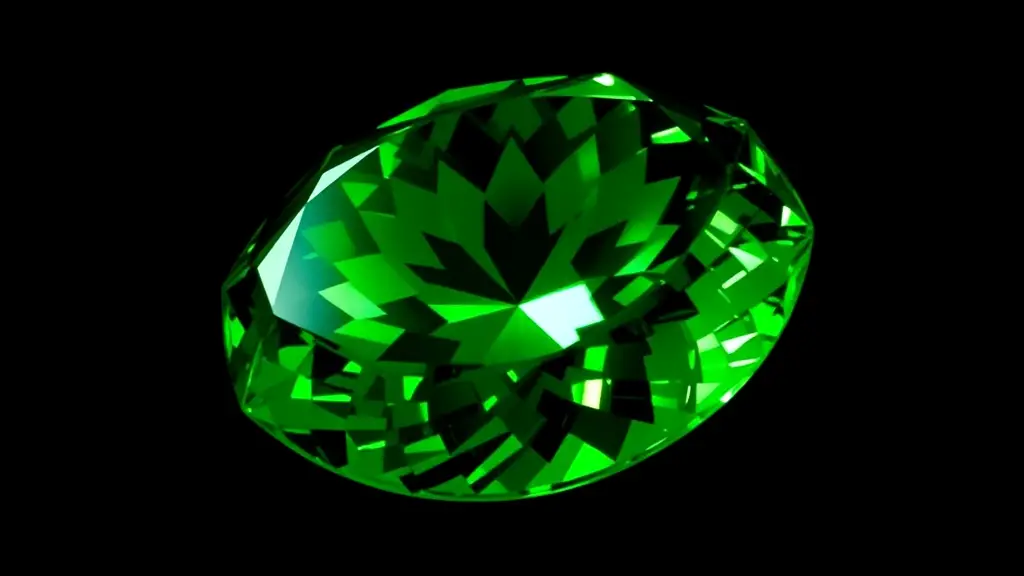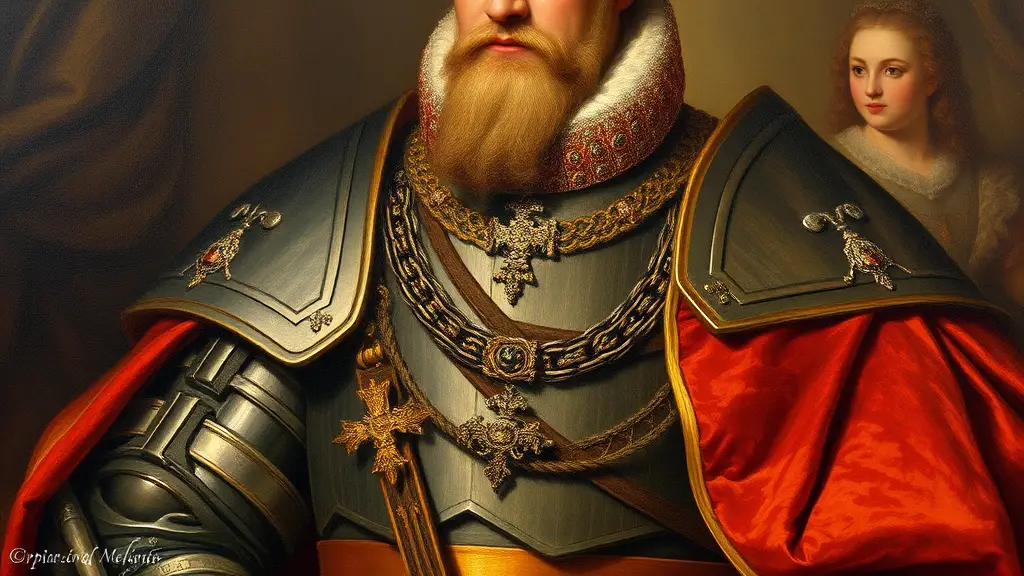The capital of Saxony, Dresden, is a unique museum city that has been called the German Florence. It resembles a treasury or a precious necklace, where, at the whim of a skilled craftsman, genuine relics neighbor and harmoniously complement each other. One of them is the Dresdner Grüner Diamant (Dresden Green Diamond), a famous large natural diamond of apple color, excellent cut and almost flawless clarity. Now it is kept in the richest European jewelry collection of the “Grünes Gewölbe” (Green Vaults), a museum located in the restored palace of Elector Augustus the Strong.

Fig.1. Hat brooch-agraffa with Dresden green diamond
The pear-cut emerald diamond shines in the center of the hat brooch-agraffa among its hundreds of white counterparts. It is the only naturally occurring green diamond in the world so large and this puts it on par with the Kohinoor, Cullinan, Hope’s Blue Diamond and other legendary treasures.
The fantastic color and unique characteristics of the Dresden treasure
Scarlet and green diamonds are considered the rarest of diamonds, accounting for a hundredth of a percent of the world’s diamond production. It is all the more surprising that the Dresden Green is very large – approximately 41 carats (about 8 grams), and is said to have once been even larger. So why is this surprising? Here it is worth talking about what makes diamonds green.

Figure 2. The Dresden green diamond
It is known that the mineral owes its emerald or grassy hue to the effects of radiation. The scientists’ hypothesis states that if a diamond-bearing rock contains radioactive elements – thorium or uranium, their centuries-long radiation distorts the crystal lattice of the stone. And for the human eye it becomes green. Interestingly, many diamonds exposed to such radiation turn green, but, alas, when cut, it turns out that only the color of the upper layer of the stone has changed. Inside the stone remains colorless. Diamonds that are green all the way down are a fantastic rarity. And one as large as the Dresden is almost unbelievable.
The stars aligned not even twice, but a million times. There are huge gemstones whose only virtue is their weight. The Dresden is lucky here. It not only has an outstanding size, but also unique characteristics. For example, it belongs to the rarest type IIa. What does that mean? It means that there are practically no nitrogen impurities in the mineral, it transmits color perfectly and is absolutely transparent in the UV range with a wavelength of up to 230 nm. The share of such diamonds in the world production is less than 2%. And, note that we are not talking about colored diamonds, but about all mined diamonds. Imagine how rare colored diamonds are among them.
By the way, we mentioned above that the weight of the stone is approximate – about 41 carats. Why is it not exact? In November 1988, the diamond was examined at the Gemological Institute of the United States (GIA), where it was evaluated by specialists. The gem could not be removed from the historical setting, so its mass was indicated “by eye” – 41 carats. At the same time the cut (modified pear-shaped) was described, the color characteristic – fancy green, and purity were assigned.
According to the GIA grading, the Dresden diamond belongs to the VS1 category. Such stones are almost flawless. Minor flaws are found in the upper layers of the mineral, and can only be seen under a microscope, at ten times magnification. Moreover, it is claimed that the Dresden Green Diamond is potentially much cleaner, but only additional cutting can fully reveal its perfection. Which, of course, no one will do, so the Dresden treasure is destined to continue to shine in the midst of its 411 colorless counterparts, retaining its current pear-shaped, or rather drop-shaped shape.
Characteristics of the Dresden Green Diamond:
History of the green diamond
Alas, in the history of the diamond treasure from Saxony there are no special passions, no mystical stories, no bloody sacrifices, which are in the trail of other legendary gems. Although, how to know, because the origin of the diamond is not exactly known. For the first time it “shone” only in the XVIII century. Then, at the end of October 1722 in a London newspaper there was an article about it. The story goes on to say that in the early 1740s the Polish ruler and Saxon Elector Augustus III purchased the stone at the Leipzig fair from a merchant from Holland, Dels.

Figure 3. Saxon Elector Augustus III
It is not known what the stone was originally. According to rumors, it weighed 2.5 times more than before cutting and cost the ruler a fabulous sum of 30000 pounds sterling for those times. Probably, the gem was so liked by the Elector that he even sacrificed state interests for its sake. A letter from Frederick the Great has been preserved, which states that Augustus, King of Poland, refused to supply heavy artillery during the siege of Brune because the money for it was spent on buying a large green diamond.
Of course, so magnificent an acquisition could not gather dust in the treasury, but had to adorn some royal jewel. The diamond was given to the brilliant jeweler Johann Friedrich Dinglinger, who made it part of the Order of the Golden Fleece.
However, in 1746, the Elector of Saxony decided to ennoble the appearance of the award, and the stone, with the light hand of the Viennese master Goldsmith Pallardi, changed the setting, taking its place in the renewed Order, next to a large colorless diamond – Dresden white. However, for a relatively short time. When Saxony was defeated by Prussia in 1763, the Order was broken, and the stones from it again went to the treasury. Five years later, in 1768, another ingenious jeweler Dissbach decorated a hat brooch with the Dresden green diamond. It is in this form that the gem has survived to our days.

Fig.4. Hat brooch with Dresden green diamond
After the Second World War, the brooch left Dresden – together with other treasures it “moved” to the USSR. However, in 1958 it returned to the then GDR. The diamond can not always be seen in the exposition of the museum – sometimes it is exhibited in other countries. For example, in 2000 Dresden Green was exhibited in the United States, and the neighbor of the Dresden Green exhibition was the legendary Hope Diamond, which became the prototype of the “Heart of the Ocean” in the drama about the wreck of the “Titanic”. And in 2006 the gem came to Russia and was shown as part of an exhibition in the Kremlin. By the way, thanks to one of these “journeys” the treasure once escaped the clutches of kidnappers.
At the very end of the fall of 2019, the Dresden diamond was exhibited in the Metropolitan Museum of Art, USA. Meanwhile, the Green Vaults was attacked by robbers who stole dozens of priceless treasures, including the green diamond’s “neighbor” from the previous setting, the Dresden White. The robbers were found, but the relics they stole, alas, were not. Nevertheless, the green diamond was unspeakably lucky – it returned from New York and safely took its place in the exposition under the “vaults”, where it is to this day.
A precious masterpiece
If we admit that Nature is the greatest of all masters-jewelers, then the Dresden green diamond is her unique masterpiece, which has no and probably will have no equal. How many centuries must have passed, how many factors and coincidences must have converged to make this stone appear! What is the probability that there will be a source of radiation in the neighborhood of the birth diamond? And that the mineral would be so large? And how much would you value the possibility that it would be found? Literally, one chance in billions. But if it were not for human genius, it is unlikely that today we would be able to enjoy the incredible play of light and inexpressible shade of the legendary diamond.